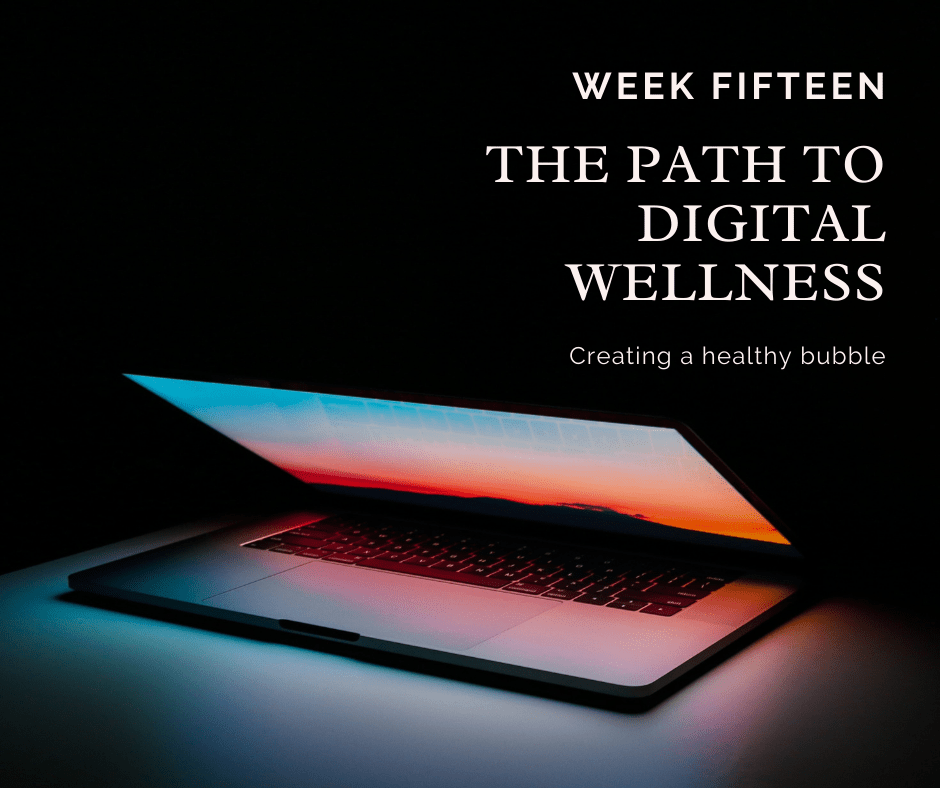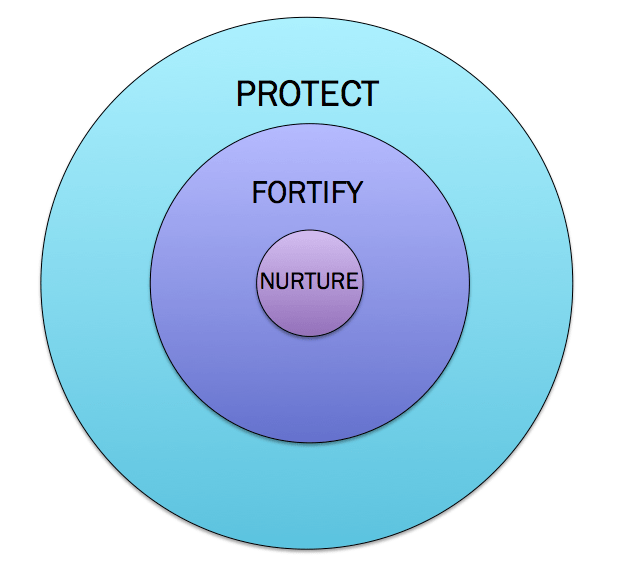Many of us are currently living inside a bubble, designed to keep us safe.
Our digital lives however, are likely a different story.
As the boundaries of our real world have become smaller, most of us have opened up our digital ones so they’re practically teeming with new tools, information, connections, and resources.
For the most part, that’s necessary, healthy, and productive.
However, it’s also true that too much of ANYTHING can be a bad for you. Flooding your digital bubble with new apps can be just as problematic as flooding your home with new people.
For optimal wellness, it’s important to maintain your digital bubble just as diligently as you’ve been doing with your real world one.
This would be true even if we weren’t in the midst of a pandemic. Periodically we should re-examine the company we keep, the information we consume, and the habits we practice, enforcing good boundaries with all of them.
In order to do this, I’d suggest using a three step process you may already be relying upon to keep your home safe.
Protect from outside threats
The first step is to make sure you’re protecting yourself from anything you perceive to be a threat.
(Whether that threat is actually harmful to you is beside the point. If it’s causing you pain, or B.S. in your life that you don’t need right now, it’s O.K. to call it a “threat.”)
You’re likely done this with your real world bubble by following “shelter in place” orders, implementing social distancing protocols, or taking extra precautions with the groceries you purchase.
To protect your digital bubble, the steps are largely the same.
Assess all of the digital tools or platforms you are currently using and evaluate if they are serving your needs well at this moment in time. Are they keeping you healthy and happy? If NOT, remove them from your bubble entirely or find a way to “sanitize” them so they’re less harmful.
For example…
- Delete apps/platforms. (Particularly if they did not pass the 3 question litmus test I proposed in Week 14.) Just as a person with alcoholism wouldn’t want to be quarantined with a cabinet full of liquor in their house, make sure you’re not sitting in your bubble with anything with which you already know you will struggle to maintain healthy boundaries.
- Change relationships. As we discussed in Week 13, mute, unfollow, or unsubscribe to anything unhealthy, unhelpful, or triggering for you. For example, some people can calmly discuss daily pandemic death totals. I am not one of those people. So, personally, (for now) I’ve chosen to mute the people in my social networks who find it important to process that info each day.
- Reduce noise. Even if something isn’t inherently harmful — like the daily emails from some big box retailer — if it’s not adding value to your life and contributing to a sense of distraction, FOMO, or inability to focus on what makes you happy, it’s okay to leave it outside your bubble right now.
Fortify the walls of your bubble
Once you’ve protected yourself from imminent threats, it’s time to focus on improving the quality of life inside your bubble, ensuring it continues to keep you safe but also allows for a sense of normalcy.
You’re likely done this already with your real world bubble by doing things like implementing new disinfecting practices in your house, setting up a remote work station, or shifting from real world meet ups to Zoom hangouts.
Fortifying the walls of your digital bubble, will again be largely the same process.
Assess everything that remains in your digital bubble and do whatever is necessary to ensure each tool/platform serves you well each day, optimizing their value and minimizing their harm.
For example…
- Create sub-groups/feeds. If some of the spaces you hang out online are not terribly healthy, but you don’t want to leave them, simply create a healthier sub-space to occupy within those spaces and hang out there instead. For example, if your Facebook feed is a mess of arguments and opinions, create a list of people you can stand, and just read their posts.
- Mitigate/manage risk. If it’s needed, (and its helpful) make some ground rules for how, when, how often, etc. you use the tools inside your bubble, especially the problematic ones. (You can use some of the ones we talked about in Week 8 to guide you.)
- Cull the dead weight. Do you really need three apps to check the daily weather? Need to check seven sources for your daily news? If not, maybe now is a good time to cull and consolidate the things in your digital bubble. Choose the things that serve you best and start clearing out anything that’s not adding value.
Nurture your spirit, feed your soul
Once you’re done the stuff above, it’s easy to overlook this last step, which is ensuring the tender parts of yourself — the parts that always seem to get overlooked in a crisis — receive nourishment and protection too.
I hope you’ve made some time for this in your real world bubble — talking to a friend, practicing self-care, going for a walk, remembering to eat something healthy.
Just like you’re taking care of your physical health each day, make sure you’re giving some attention to your mental and spiritual health too by using technology to not just keep you safe and productive, but also healthy, happy, and whole.
For example…
- Connect with art: Art is helpful for escapism, but it can also be food for your spirit. Use tech tools or tutorials to create some of your own, simply consume art others have made, (sure, Tiger King counts!) or take virtual tours of the places and things you’ve always longed to see.
- Seek inspiration and hope: Use the power of technology to search for or subscribe to information, quotes, newsletters, videos, etc that you know will delight or inspire you and remind you of all of the courage and beauty in the world.
- Find reasons to smile: Remember, you are living in traumatic, unprecedented times, so do whatever you can to lift your spirit each day. Watch a comedy special or cute animal videos, implement a gratitude practice, or do small acts of kindness, (even if only for yourself).
This week’s exercise
Assess your digital bubble and make sure it’s as healthy and safe as your real world one.
- Take steps to protect yourself from threats.
- Fortify your life inside the bubble.
- Seek out new resources to nurture your spirit.
Next week we’ll be talking about building better boundaries and habits with technology. I look forward to seeing you then.
As always, thank you for stopping by. I hope you are healthy and safe.
Want to participate in this eCourse?
1. Continue to drop by my blog or Medium account each Saturday where you can read the weekly post at your leisure, or…
2. Subscribe to this email list and I’ll send you a post each Saturday.
I’d love to hear your thoughts on this course as we go. Feel free to leave comments on any of the posts or email me at jen@jenkane.com if you’d like to share something privately.






